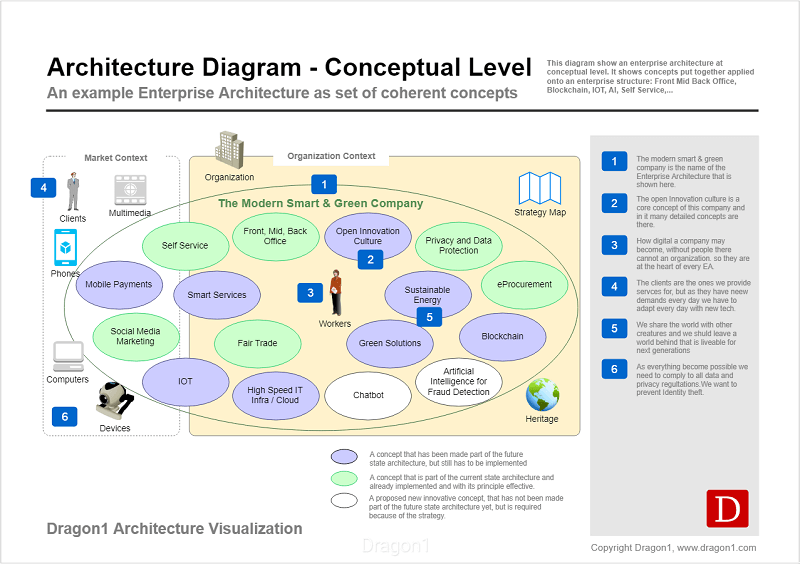Introduction
Solution architecture is a critical discipline that plays a pivotal role in the success of any organization. It involves designing and implementing holistic solutions that address the complex challenges faced by businesses today. The art of solution architecture lies in finding the delicate balance between innovation and practicality, ensuring that the solutions devised not only push the boundaries of what is possible but also deliver tangible value to the organization.
The Role of a Solution Architect
A solution architect is a key figure in the world of technology and business. They are responsible for translating business requirements into technical solutions that meet organizational goals. A solution architect must possess a deep understanding of both business processes and technological capabilities, allowing them to bridge the gap between stakeholders and technical teams.
Key Responsibilities of a Solution Architect
- Understanding Business Needs: A solution architect must have a clear understanding of the organization's business needs, goals, and objectives. By closely collaborating with stakeholders, they can identify pain points and define requirements that drive the development of effective solutions. Designing Solutions: Once the requirements are gathered, a solution architect designs comprehensive solutions that address these needs. This involves creating architectural blueprints, selecting appropriate technologies, and defining integration strategies to ensure seamless functionality. Collaboration: Collaboration is a crucial aspect of solution architecture. A solution architect works closely with stakeholders, project managers, developers, and other relevant teams to ensure alignment throughout the project lifecycle. Technology Evaluation: A solution architect evaluates various technologies to identify those that align with organizational objectives. They keep up-to-date with emerging trends and assess their potential impact on existing systems.
The Art of Balancing Innovation and Practicality
Defining Innovation in Solution Architecture
Innovation in solution architecture refers to Application Portfolio Management the ability to think outside the box and come up with creative solutions that push boundaries. It involves leveraging cutting-edge technologies, exploring new approaches, and challenging traditional methods to drive business transformation.
The Importance of Practicality in Solution Architecture
While innovation is essential, practicality ensures that the proposed solutions can be implemented and maintained effectively. Practicality takes into account factors such as budget Click for more constraints, resource availability, scalability, and long-term sustainability. A practical solution is one that delivers tangible value while being realistic and feasible within the given constraints.
Striking the Right Balance
Achieving the delicate balance between innovation and practicality requires careful consideration and a holistic approach. Here are some key strategies to help solution architects strike this balance:

Understanding Business Objectives: By gaining a deep understanding of the organization's objectives, a solution architect can align their innovative ideas with the overall business strategy. This ensures that the proposed solutions not only meet technical requirements but also deliver tangible value to the organization.
Evaluating Risks: Innovation often involves taking risks, but it is crucial to assess these risks carefully. A solution architect must evaluate the potential impact of innovative solutions on existing systems, data security, and operational efficiency. This helps in identifying potential roadblocks and mitigating risks before they become major obstacles.
Collaboration with Stakeholders: Collaboration plays a vital role in striking the right balance between innovation and practicality. By involving stakeholders from different departments and levels of the organization, a solution architect can gain valuable insights and ensure that all perspectives are considered during the decision-making process.
Building Scalable Solutions: Scalability is an essential aspect of practicality. A solution architect should design solutions that can accommodate future growth and evolving business needs. This requires considering factors such as data volume, system performance, integration capabilities, and flexibility.
Continuous Learning: Solution architects need to stay updated with emerging technologies and industry trends to drive innovation effectively. Continuous learning enables them to identify opportunities for improvement, explore new possibilities, and stay ahead of the curve.
Regular Evaluation and Adaptation: The world of technology is constantly evolving, and solution architects must be adaptable. Regularly evaluating the effectiveness of implemented solutions and making necessary adaptations allows for continuous improvement and ensures that the balance between innovation and practicality is maintained.
FAQs about Solution Architecture
What is Solution Architecture?- Solution architecture is a discipline that involves designing and implementing holistic solutions to address complex business challenges. It bridges the gap between business requirements and technical capabilities, ensuring that organizations achieve their objectives efficiently.
- A solution architect is responsible for translating business requirements into technical solutions. They collaborate with stakeholders, design comprehensive solutions, evaluate technologies, and ensure alignment throughout the project lifecycle.
- Solution architecture supports innovation by exploring cutting-edge technologies, challenging traditional methods, and driving business transformation. It enables organizations to leverage innovative ideas to gain a competitive edge in the market.
- Practicality ensures that proposed solutions can be implemented and maintained effectively within given constraints. It takes into account factors such as budget limitations, resource availability, scalability, and long-term sustainability.
- By understanding business objectives, evaluating risks, collaborating with stakeholders, building scalable solutions, continuously learning, and regularly evaluating and adapting implemented solutions.
- Collaboration allows solution architects to gain valuable insights from stakeholders, consider different perspectives, and ensure that all requirements are taken into account during the decision-making process.
Conclusion
The art of solution architecture lies in finding the delicate balance between innovation and practicality. By understanding business objectives, evaluating risks, collaborating with stakeholders, building scalable solutions, continuously learning, and regularly evaluating and adapting implemented solutions, solution architects can successfully navigate the complex landscape of technology and business. Through their expertise and holistic approach, they enable organizations to achieve their goals while pushing the boundaries of what is possible. The art of solution architecture is a testament to the power of innovation and practicality working hand in hand.